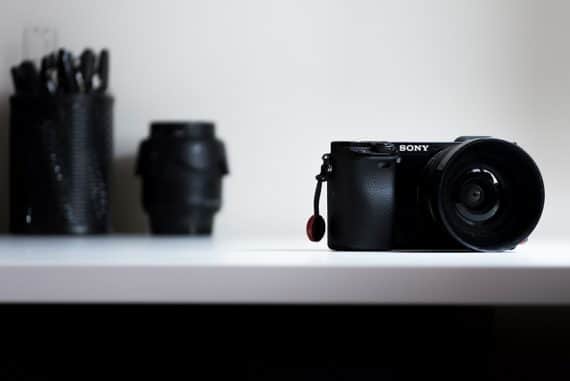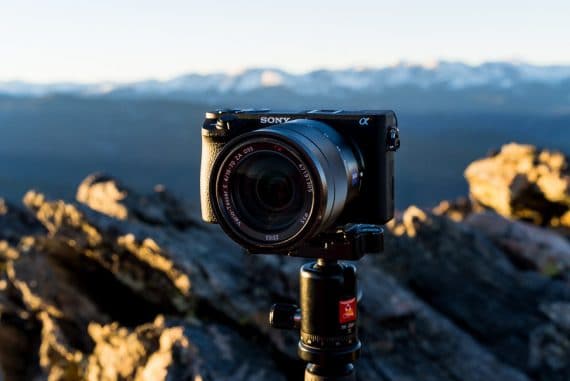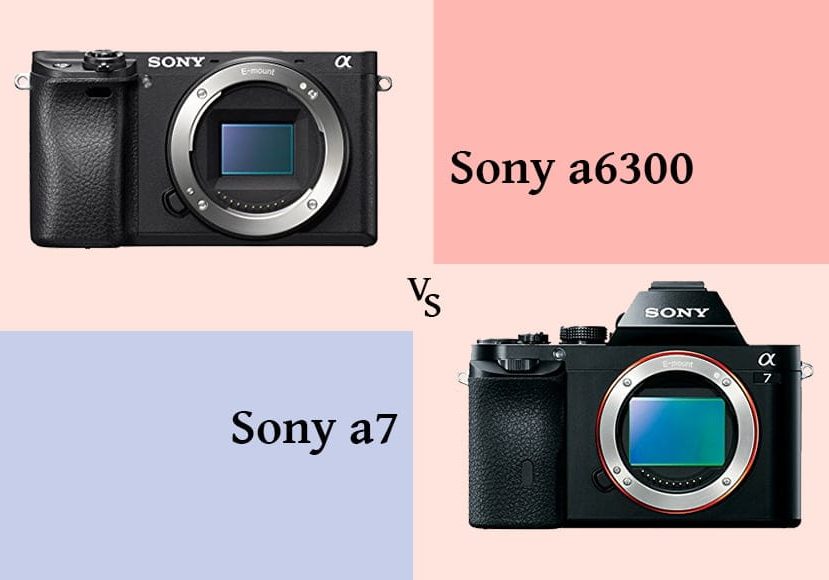
Sony a7 vs a6300 Difference / Roundup Comparison
Which camera wins between the Sony a7 vs Sony a6300? Find out the differences, the pros and cons of each, and which is best for you!
If you’re struggling to decide between these two excellent cameras, then this Sony a7 vs a6300 guide is perfect for you.
Both the Sony a7 and the Sony a6300 are capable of fantastic images, though they’re designed for different purposes.
While the a7 features a full-frame sensor and all the benefits that come with it (see our full frame vs crop guide), the a6300 is geared toward those who need a compact, ultra-fast camera for all-around shooting.
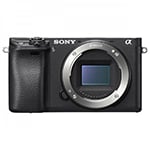
It may be small, but this compact gem beats the a7 with stellar image quality, more accurate autofocus and longer battery life.
Note that both of these mirrorless cameras are relatively old – despite having a full-frame sensor, the Sony Alpha a7 debuted in 2013, while the a6300 started shipping in 2016.
But while neither sports today’s top-of-the-line technology that Sony is so famous for, they do offer some great capabilities for an excellent price.
Let’s take a closer look at these two mirrorless models. You can also check out our Sony a6300 review for a closer look, and our Sony a6300 vs a6500 comparison as well.
Sony 6300 vs a7 | Key Differences
1. Size & Weight
When it comes to size, both the Sony a7 and the a6300 are small – for their class, that is.
The Sony Alpha a7 was the first compact full-frame camera to hit the markets.
And the a6300 is almost small enough to be called pocket-sized; it’s absolutely dwarfed by competing APS-C DSLRs.
Compared against one another, however, the a6300 is by far the smaller and lighter of the two. It weighs just 404 g (14.25 oz), versus 474g (16.7 oz) for the a7.
And it would be lighter still if not for its high-quality build (it’s made out of magnesium alloy, compared to the mostly plastic a7).
Additionally, the a6300’s dimensions sit at a small 120 x 67 x 49mm, compared to the 126.9 x 94.4 x 48.2mm of the a7. A big part of this difference is the electronic viewfinder hump on the a7, which adds an extra 12 millimetres or so (the a6300’s EVF is integrated into the body).
So while either of these mirrorless cameras will work for travel photography or as a walkaround camera, the a6300 is going to be the better option if compactness is your main concern.
Of course, a more compact camera does come with some drawbacks – which I’ll discuss in the next section.
2. Ergonomics/Handling
As I mentioned above, the Sony a7 is the bigger and heavier camera, which means you’re stuck handling the greater size and weight, but do get bonuses such as a nice, comfortable grip, as well as an easier-to-use viewfinder and more spacious button placement.
Fortunately, Sony has taken steps to ensure that the a6300, despite its compact size, is still quite usable. In fact, the front grip on the a6300 is on par with that of the a7, though it is a bit more angular.
Personally, I struggle to work with the cramped button placement on a compact camera like the a6300. It’s easy to hit the wrong button by mistake, plus the buttons feel less substantial overall.
And while the Sony a7’s button placement is almost identical, that tiny bit of extra space matters – the Sony a7 buttons just feel better-positioned beneath your fingers.
Note that this may not be much of a problem for folks coming from a point-and-shoot camera, or even smartphone users.
But if you’re used to a DSLR – more so if the DSLR was full-frame – then you’re going to feel far, far more comfortable on the a7 over the a6300.
Now, one area where Sony consistently falls down is in terms of menu organization, and both mirrorless cameras are quite bad in this respect.
Nothing is logical, and finding the desired settings is a nightmare. That’s why my approach to using Sony cameras has become one of ‘set it and forget it.’
In other words: Customize the camera to work the way you want it, right off the bat. And from then on, only dive into the menus when absolutely necessary.
One last thing worth mentioning is the lack of a built-in flash on the a7. For most photographers, this won’t matter in the slightest, since you can always use an external flash – but if you’re prone to putting up the built-in flash in spur-of-the-moment low-light situations, then the a6300 might be the better choice.
3. Rear Screen and Electronic Viewfinder
Neither the a7 nor the a6300 have especially impressive electronic viewfinders.
Both offer 2.4M-dot resolution, and while they’re far from bad, they’re hardly class-leading.
I do find the design of the a6300’s EVF a bit off-putting. It’s positioned off to the left of the camera, in the corner, and this feels unnatural to me after using the DSLR-style centered EVF design.
So to my mind, at least, the a7’s EVF is preferred.
As for rear LCDs:
Neither has touch capabilities, and neither is fully articulating. They both tilt, which is useful for getting into odd angles, and will be appreciated by portrait photographers, architectural photographers, and street photographers, among others.
Both LCDs are 3 inches, though the Sony a7 offers slightly better resolution: 1230K dots, versus 921K dots on the a6300.
4. Image Quality
When it comes to image quality, the Sony a6300 does surprisingly well, especially for a camera that’s quite a few years old.
But it struggles to compete with the a7, especially when it comes to dynamic range and high-ISO capabilities.
This isn’t exactly unexpected, given the larger full-frame sensor on the a7 versus the APS-C CMOS sensor-size on the a6300.
Let’s dive in deeper:
With the a7’s full-frame sensor you get 24 MP of resolution, around 14 stops of dynamic range, and decent high-ISO shooting.
Note that, while 24 MP is hardly jaw-dropping, it’s one spec that Sony has retained in all of its basic Sony Alpha a7 lineup, including both the Sony a7 II and Sony a7 III.
It’s also what you’ll find in modern-day full-frame sensor cameras like the Nikon Z6, and is similar to the 26 MP Canon EOS RP.
In other words, it’s still a perfectly respectable megapixel count for a mid-range full-frame camera. It’s also the megapixel count you get on the Sony a6300, so neither camera has the edge in that respect.
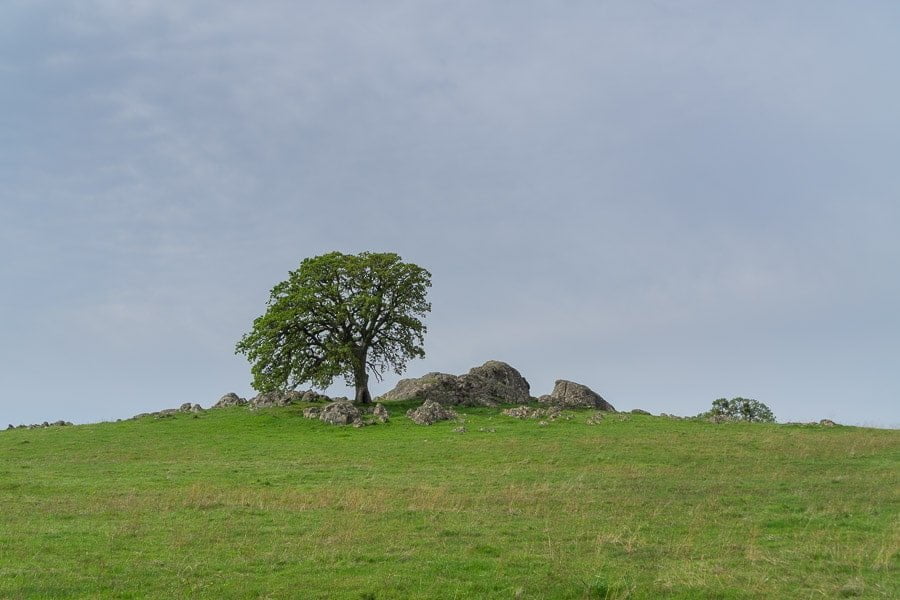
Sony a6300 vs a7 comparison (Shot on Sony a6300) | © Marc Bergreen
The 14-stop dynamic range on the a7, however, is above average. It outperforms the much newer Canon EOS RP, though Sony’s recent full frame sensor technology does push beyond this to reach around 15 stops of dynamic range (for those who need to squeeze the utmost detail out of their images).
It’s also a couple of stops better than what you’ll get from the a6300’s APS-C CMOS sensor, making the a7 the clear better option for landscape photographers, in particular, as well as anyone frequently working in high dynamic range conditions.
The a7 also distinguishes itself in terms of high-ISO performance. It beats the a6300 quite soundly, by close to a stop, offering usable images up to around ISO 6400 (whereas the a6300 starts showing a serious drop in quality at around ISO 3200).
Compared to other full-frame cameras, neither of these results are great – the Canon EOS RP is better at all ISOs, as is the Nikon Z6.
You’re also going to get much better high-ISO capabilities on the newer a7 III, so while the a7 is no slouch, this is one area where it’s starting to show its age.
Another thing to note is that on the Sony Alpha a7, you can take full advantage of the Sony FE lenses (guide), meaning better low light performance and ability to blur the background.
Since the two cameras both employ a Sony e-mount, meaning both can attach Sony FE lenses, but on the Sony a6300, the image will be ‘cropped’, due to its smaller APS-C sensor.
If you need to shoot in very low light or use fast aperture Sony FE lenses to their full capabilities, the Sony Alpha a7 provides the edge here.
5. Crop Factor/Sensor Size
As mentioned above, sensor size is another important factor when it comes to the Sony a6300 vs Sony a7.
Briefly, the Sony a7 is a full-frame camera, which means that it has a larger sensor size of approximately 35mm, and comes with no narrowed field of view.
But the Sony a6300 packs an APS-C sensor, which means that all Sony e-mount lenses on the a6300 will have their field of view narrowed by 1.5x.
So a 100mm e-mount lens on the a6300 will give cropped photos (similar to a 150mm lens on the a7).
For wildlife photographers or sports snappers, this can be a real benefit. One area where Sony’s lens lineup really struggles is in terms of telephoto and super-telephoto options, so an added 1.5x reach can help make some of Sony’s shorter lenses more acceptable.
But for landscape and architectural photographers, among others, the loss of an ultra-wide field of view on wide-angle lenses is far from desirable.
So ask yourself: Do you want more reach? Or do you want to be able to shoot as wide as possible?
6. Autofocus
For years, Sony cameras have been known for their autofocus capabilities.
But unfortunately, neither of these models pack Sony’s latest autofocus algorithms (i.e., Real-Time Tracking and Real-Time Eye AF).
That said, the Sony a6300 sports the newer system of the two, and it is fast, even it’s not quite at the level of more recent models.
On the a6300, you get good Eye AF, which is consistently useful when shooting portraits or close-up street shots of people.
You also get impressive tracking and all-around lightning-fast focusing, especially when paired with Sony’s excellent E-mount lens lineup.
This is possible due to the huge number of points Sony includes in the a6300’s hybrid AF: 425 phase-detection points and 169 contrast-detection points.
This is one area where the Sony a7 trips up; while it offers a respectable 117 phase-detection points and 25 contrast-detection points, focusing is nowhere near the speed of the a6300.
You’ll do fine with still subjects in good light, but as soon as things get dark – or tricky – the a7 will start to struggle.
So for sports shooters or other action photographers, the a7 just isn’t going to cut it, while the a6300 is a great budget option.
7. Drive (FPS)
The Sony a6300 is the faster camera, hands down.
It can shoot at 11 frames per second in continuous shooting, while offering continuous focus.
When using the electronic shutter for silent shooting, this drops to just 3 frames per second – but it’s still a nice option to have for situations when absolute silence is required.
The Sony a7, on the other hand, just isn’t meant for action photography. You get 5 frames per second without using continuous AF and only 2.5 frames per second with continuous AF, both of which are quite slow by today’s standards, even for megapixel monsters like the Sony a7R IV.
(And the Sony a7 doesn’t include a true silent shooting mode, so there’s no comparison that can be made.)
For sports photography or wildlife photography, the a6300 is the obvious choice.
Though I would like to see a better buffer; the Sony a7 offers around 30 RAW photos during continuous shooting mode, compared to approximately 20 RAWs on the a6300.
8. Battery Life
The latest iterations of the a7 and the a6300 (the a7 III and the a6600, respectively) offer an amazing amount of battery life.
Unfortunately, these upgrades were made long after the a7 and the a6300 debuted, which means that you’re stuck with pretty poor performance on both of them. Here’s the estimated battery life:
- 340 shots using the LCD and 270 shots using the EVF on the a7.
- 400 shots using the LCD and 350 shots using the EVF on the a6300.
The extra shots on the a6300 will undoubtedly come in handy. But unless you’re the type who only takes a couple-dozen shots on an outing, you’re going to need at least one extra battery for both cameras – and probably more.
9. Video
When it comes to video, the newer Sony a6300 has the edge over the a7.
While the a7 gives you full HD video at 60p, plus a 3.5mm mic jack and a headphone port, this can’t compare to the capabilities of the a6300: 4K/30p video, downsampled from 6K for a gorgeous, high-quality output.
You also get a 3.5mm mic jack for external audio options (though no headphone port).
In terms of videography, the a6300’s main drawback is the lack of image stabilization, as well as the tilting – not articulating – screen during live view.
But the a7 also struggles with these problems for video, making the a6300 the obvious choice for more serious videographers.
10. Price
If you’re looking at either of these cameras, one of the main factors you’re going to be considering is price.
And in this area, neither model disappoints.
While you can buy the a6300 new for around US$900, you can also grab it used for between $400 and $600, which is a fantastic deal considering its capabilities.
And the Sony a7 is no longer available new, but you can get it used for an amazingly low price of around US$500.
Just $500, for full-frame image quality and a decent-quality EVF.
How’s that for a bargain?
Sony a6300 vs a7 | Final Words

Sony Alpha a6300 and Sony a7 compared (Shot on Sony a6300) | © Marc Bergreen
Both the Sony Alpha a6300 and Sony a7 are old, but they’re also both very strong performers, especially for the price.
While newer models certainly offer better image quality, better autofocus, and better features (e.g., IBIS), the a7 and the a6300 do some things really, really well.
The a7 is a great option for enthusiast landscape photographers, architectural photographers, or portrait photographers aiming to get that full-frame image quality. For less than the cost of a new entry-level mirrorless model, you get strong image quality and a good mirrorless experience.
The a6300, on the other hand, is more of a compact, action-oriented camera. I recommend it for serious street photographers who want something light and inconspicuous, as well as casual photographers, travel photographers, and enthusiast sports photographers on a budget.
Either way, you’ll be grabbing a fantastic model for the price you pay!

It may be small, but this compact gem beats the a7 with stellar image quality, more accurate autofocus and longer battery life.






